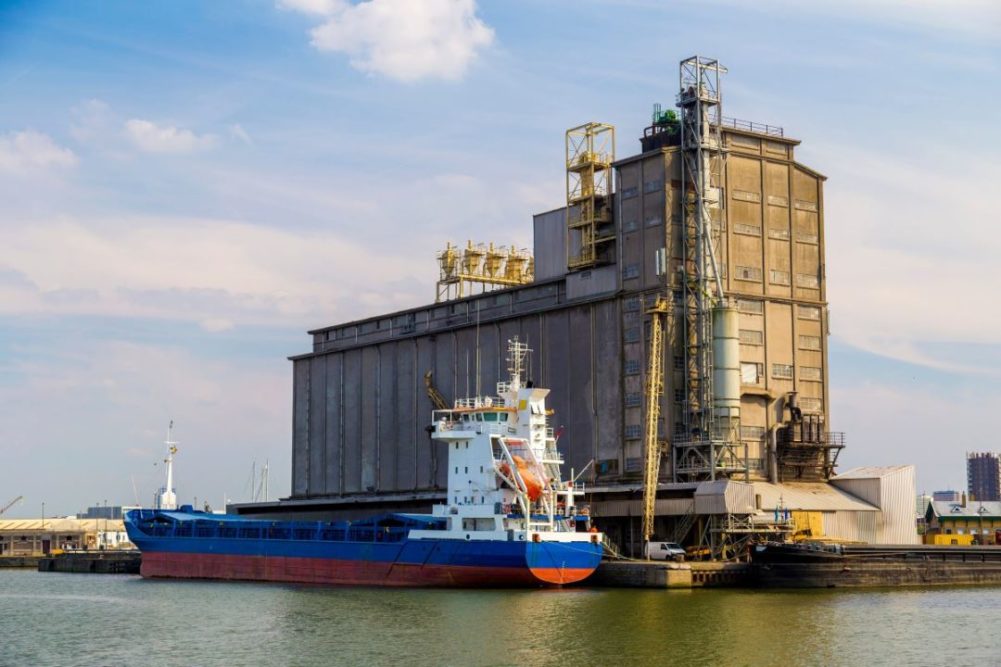KANSAS CITY, MO. — The low water levels flowing down the Mississippi River continue to reverberate through agricultural freight markets.
At 2,340 miles, the Mississippi is the second-longest river in the United States (behind the Missouri), but feeds from the largest drainage basin in the country. It drains all or parts of 31 states and two Canadian provinces situated between the Rocky Mountains and Appalachian Mountains. It’s also a vital southbound route to the Gulf for US exporters, carrying 92% of US agricultural exports and 78% of the global exports of feed grains and soybeans.
In 2022, the water level in the Mississippi has dropped to at least 30-year lows, and to record lows in many places in the South, such as in Baton Rouge, La., where receding water revealed a ship that sank in 1915. In October, barges were loaded with reduced capacities in an effort to avoid grounding on sandbars. Groundings still occurred, causing commercial traffic and riverboat cruises south of Illinois to be halted for more than a week. In some places such as just north of Vicksburg, Miss., barges staged along the shore awaiting sufficient water levels to move safely south and for water to rise high enough to unload at ports and docks. The US Army Corps of Engineers initiated dredging operations to deepen the shipping channel near Memphis, Tenn., and Stack Island, Miss., and reopened the river Oct. 10.
Nevertheless, low water persisted. In numerous places, such as in New Madrid, Mo., where the river wraps around a non-contiguous exclave of Kentucky, and 120 miles further south at Memphis, Tenn., the devices that the US Geological Survey uses to measure gage height, or stage, have begun to register zero.
“With river stages around the area being so low, a few gages have been reporting negative values,” the National Weather Service office in Paducah, Ky., tweeted on Oct. 17. “Negative values do not mean the river has run dry. Rather, the water level has fallen below the ‘zero’ reference point for the river gage, which is above the river channel bottom.”
The water level has dropped so precipitously in 2022 because the regions that feed directly into the Mississippi, or into tributary rivers that then feed the Mississippi, have experienced extended, ongoing periods of drought. That, along with forecasts envisioning a La Niña oceanic-atmospheric phenomenon this winter, means relief isn’t yet in sight for shippers along the channel nor those vying for increasingly tighter truck and rail capacity in a much wider swath of the United States.
Big swaths of the country received some rain in the last week of October. Hurricane Roslyn slammed into Mexico north of Puerto Vallarta as a Category 3 storm. As another storm approached, Roslyn’s remnants were pushed north into the US southern and central Plains from Texas to Illinois, issuing a few inches of badly needed moisture into dry soils and shallow rivers.
“Water levels are still really low on the river, even as parts of the Ohio River Valley have seen a bit of rain recently,” a grain buyer for a major miller said Oct. 24. “Obviously that in itself won’t be enough to move the needle on its own, we’ll need some continuous rain to raise levels at docks down south.”
For shippers, low water has meant limited draft sizes (a measure from the waterline to barge hull structure) and tow sizes (how many barges can be linked to be propelled by one pusher boat).
“Shippers can’t efficiently or economically move the grain from north to south,” the grain buyer said. “If they can’t use barges efficiently, they’ve got to use rail to supplement. Now all of a sudden, we’ve got the export market competing for rail as well. It introduces another party seeking freight that historically is not there. Rail service depends on a lot of factors, but essentially when there’s a bid and an ask, whomever pays the highest price gets the freight. Plus, the window of opportunity for US soybean exports is closing quickly because when Brazil starts harvest mid- to late-Q1, they’ll have the cheaper supplies.”
Rail freight costs were rising in the last week of October. Secondary market bids for Union Pacific single cars were $200 over tariff per car on $300 offers.
“Costs aren’t stupid high like last year, but this is how it began in 2021 about one year ago,” a hard red winter wheat trader said Oct. 25.
Meanwhile, barge rates spiked in early October, but dropped at mid-month, the US Department of Agriculture said in its latest Grain Transportation report. The St. Louis barge spot rate hit a peak of $105.85 per ton in the week of Oct. 10 before slumping to $72.58 per ton a week later. After the dip, the spot rate remained up 130% from 2021 and up 260% from the recent three-year average
“Amid uncertainty about when barge traffic will normalize, some grain shippers have delayed deliveries until later in the year, which has softened demand for barges,” the USDA said. “Although spot rates have fallen, water levels on the Lower Mississippi River (LMR) continue to be an issue, with the river gage at Memphis dropping to a record low of −10.76 feet on Oct.18. On the Ohio River (which feeds a significant portion of the LMR’s water), low water levels have delayed barge traffic because of groundings and closures for dredging work.
Periodic dredging closures, and restrictions on tows and drafts are expected to persist through October at the earliest based on forecast precipitation, the USDA said.


